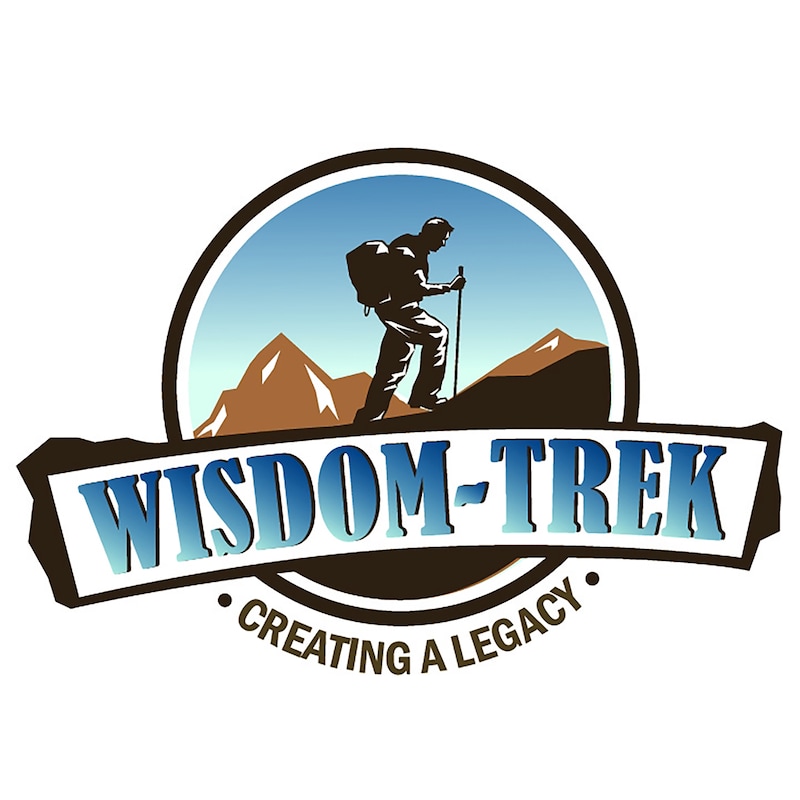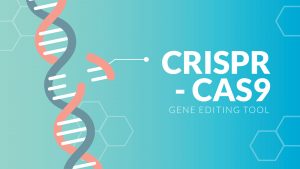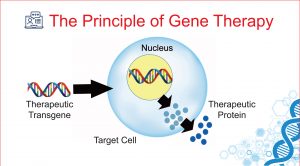
Shownotes
Welcome to Day 1493 of our Wisdom-Trek, and thank you for joining me.
This is Guthrie Chamberlain, Your Guide to Wisdom
The Other Pandemic - Aging – Ask Gramps
Wisdom - the final frontier to true knowledge. Welcome to Wisdom-Trek! Where our mission is to create a legacy of wisdom, to seek out discernment and insights, to boldly grow where few have chosen to grow before. Hello, my friend, I am Guthrie Chamberlain, your captain on our journey to increase Wisdom and Create a Living Legacy. Thank you for joining us today as we explore wisdom on our 2nd millennium of podcasts. Today is Day 1493 of our Trek, and our focus on Fridays is the future technological and societal advances, so we call it Futuristic Fridays. My personality is one that has always been very future-oriented. Since my childhood, I have yearned for the exploration and discovery of new technologies and advancements for the future. I grew up with the original Star Trek series, and even today, as I am now on my 65th revolution around the sun, I still dream of traveling in space. Each week we will explore rapidly converging technologies and advancements, which will radically change our lives. At times, the topics may sound like something out of a science fiction novel, but each area that we explore is already well on its way of becoming a reality over the next couple of decades.
To keep with our theme of “Ask Gramps,” I will put our weekly topics in the form of a question to get us on track. This week’s question is, Hey Gramps, I understand that Covid-19 has impacted nearly every country in the world and has become a politically charged subject, but how does it compare to other diseases?
The Other Pandemic - Aging
Last week we learned how Artificial Intelligence would change our shopping experiences. This week, I want to focus on a pandemic that is not considered a pandemic, aging. I am using some of the information mentioned in Peter Diamandis’s blogs and book “The Future is Faster Than You Think.”
As the world continues to face the ravages of COVID-19, there is a second pandemic killing everyone… it’s called aging. You may think to yourself, Gramps, that’s silly. Everyone ages, and everyone will eventually die. While I understand that, ask yourself, can what we consider a typical lifespan be increased significantly? For the first time in history, scientists and entrepreneurs think there’s a way to slow aging in its tracks, and perhaps even reverse it.
In today’s podcast, we’ll do a quick review of the cutting-edge technology that gives me tremendous hope that we can add a healthy 20 or 30 years onto our healthspan, ultimately making 100 years old the “new 60.”
COVID-19 Comparison: As of today, over 36 million confirmed COVID-19 cases have been recorded globally, and those are only the ones that have been tested. Since its initial outbreak, over 1 million deaths globally have been in patients who have tested positive with COVID-19. I realize that some individuals may have died of other causes during this period, but it is still significant. Not to minimize this number at all, because all life is precious. As a point of reference, globally, cardiovascular disease kills over 18 million per year and cancer over 10 million. Some of the Covid patients would have been in these numbers.
To put this in context, approximately 7.8 billion people are alive today, roughly 9 percent of them over the age of 65 and suffering from the deadliest disease on Earth: Aging.
Without competition, aging is the #1 correlated variable for deaths due to heart disease, cancer, diabetes, respiratory disease, and dementia. In effect, 9 percent of the population equates to 720 million confirmed cases of aging. Even then, this is an extraordinarily conservative estimate as many people begin experiencing the effects of aging in their 50s.
Despite these figures, the world is only just beginning to recognize aging as a disease. So far, no one has recovered from this disease in the history of humanity, and barring fundamental scientific breakthroughs, you can confidently assume it will take your life.
As a society today, we accept that aging (and death) is a part of life, but nothing says our lives can’t be significantly extended.
Many species on Earth live far longer lives. The Bowhead whale can reach 200 years of age, while the Greenland Shark and Sea Turtles can make it to more than 400 years.
If they can, why can’t we? Clearly, it is either a hardware or a software problem, both of which are within the grasp of our understanding, and soon within reach of our modification. Some of these technologies are gene therapy, CRISPR, and cell therapies, to name a few.
In his book, Lifespan by Dr. David Sinclair of Harvard Medical School, he gives a host of compelling evidence to show there is no reason people born today cannot live to at least 120 in healthy condition, if not 150 and beyond.
As scientists and entrepreneurs race to unlock and rewire the biology of aging, here are some key technologies you can track today to extend your healthspan. Which is to say, the amount of time you have to live a healthy, functional life, avoiding expensive, bed-ridden, end-of-life care.
We are going to focus on the following four technologies:
- CRISPR & Gene Therapy
- Stem Cell Therapy
- Wnt Pathway Manipulation
- Senolytic Medicines
(1) CRISPR & Gene Therapy: Why does cheaper, faster genomic sequencing matter? It’s a healthcare gamechanger.

At its base level, aging is ultimately the dis-regulation or breakdown of the cells in our body. Consider that there are a few main ways to repair such situations. “Gene Therapy” is one such technology that effectively inserts a gene into specific cells in your body, restoring the instruction set that is corrupted or missing. A second technique called CRISPR-Cas9 allows you to edit (similar to cut and paste) the DNA sequence inside your cells.
CRISPR-Cas9, for example, has become our leading weapon in the fight against genetic diseases. Technically, it’s an engineering tool that allows us to target precise locations in the gene code and then rewrite that DNA.
Want to remove the string of DNA that produces muscular dystrophy? Just target that spot in the genome, unleash CRISPR-Cas9, snip, snip, and snip—problem solved. More importantly, CRISPR is cheap, fast, and getting easier to use. Most recently, scientists at the Broad Institute of MIT and Harvard unveiled CRISPR 2.0, a next-generation editor that’s extremely precise. It can target and change a single letter in a single string of DNA. What good is a single letter out of 3.2 billion?
As explained by David Liu, the Harvard chemical biologist who led the work “of more than 50,000 genetic changes currently known to be associated with disease in humans, 32,000 of those are caused by the simple swap of one base pair for another.”
(2) Stem Cell Therapy: Each of us is a collection of over 30 trillion human cells. Every one of these cells, those in your brain, lungs, liver, skin, and everywhere else, are derived from a single pluripotent type of cell called a stem cell.
When we are young, our bodies are teeming with stem cells that can replace any damaged tissue. They are the restorative engines of our bodies, helping us repair damage. But as we age, the number of stem cells in our tissues and bloodstream can reduce 100X or 1,000X, making repair much more difficult.
What if we could “restore our body’s rejuvenative engine,” our stem cell population? What if we could take stem cells from the human placenta, an organ whose stem cells actually “form” the fetus, and augment your current stem cell population?
Celularity (a company founded by stem cell pioneer Bob Hariri and Peter Diamandis), for instance, has now demonstrated that placental-derived stem cells given to animals can extend life up to 30 percent. Showing incredible promise, Celularity now aims to make this approach viable in humans, harnessing stem cells to amplify the body’s ability to fight disease and heal itself.
(3) Wnt Pathway Manipulation: An incredible company based in San Diego, called Samumed, is now targeting the signaling pathways that regulate the self-renewal and differentiation of adult stem cells, a pathway known as “wnt.”
In animal studies, as well as Phase-1 and Phase-2 human clinical trials, these drugs (small molecules) have been shown to regrow cartilage, heal tendons, remove wrinkles, and, by the way, stop a multitude of cancers and reverse Alzheimer’s. This research also explains why Samumed, a stealth mode company, has a $12 billion valuation. Samumed has developed nine different so-called “regenerative medicines.” All are in the FDA’s pipeline, including everything from hair-loss treatments to Alzheimer’s drugs.
(4) Senolytic Medicines: Over the arc of your life, the cells in your body divide until they reach what is known as the Hayflick limit, or the number of times a normal human cell population will divide before cell division stops, which is typically about 50 divisions.

What follows typically next is programmed cell death or destruction by the immune system.
However, a tiny fraction of cells become ‘senescent cells,’ evading this fate to linger indefinitely. These lingering cells secrete a potent mix of molecules that trigger chronic inflammation, damage the surrounding tissue structures, and change nearby cells’ behavior for the worse.
Senescent cells appear to be one of the root causes of aging, causing everything from fibrosis and blood vessel calcification to localized inflammatory conditions such as osteoarthritis and diminished lung function.
Fortunately, scientific and entrepreneurial communities alike have begun to work on senolytic therapies, driving forward technologies that selectively destroy senescent cells out of the laboratory and into a half-dozen startup companies.
One such prominent company in the field is Unity Biotechnology, which is developing senolytic medicines to selectively eliminate senescent cells with an initial focus on delivering localized therapy in osteoarthritis, ophthalmology, and pulmonary disease.
Beyond these four areas above, countless other therapeutics and approaches range from metformin, NAD boosters, rapalogs, and GDF-11 to a new generation of AI/Machine Learning-enhanced molecules being discovered. Added to this, the research that is being fast-tracked for Covid-19, humans’ potential lifespan will easily exceed 100 while allowing you to maintain an active lifestyle.
God gives us wisdom, and as Christ-followers, we know that we will not live forever in our current human bodies, but with these new technologies, the sanctity of human life can be extended well beyond what it is today. This will give us additional opportunities to build God’s kingdom and share His good news.
Wisdom is more precious than rubies;
nothing you desire can compare with her.
She offers you long life in her right hand,
and riches and honor in her left.
She will guide you down delightful paths;
all her ways are satisfying.
That is a wrap for today’s question. Join us again next Futuristic Friday as we look at another exciting exponential technology area on our ‘Ask Gramps’ episode. Our next trek is Meditation Monday, where we will help you reflect on what is most important in life. So encourage your friends and family to join us and then come along on Monday for another day of ‘Wisdom-Trek, Creating a Legacy.’
If you would like to listen to any of the past 1492 daily treks or read the associated journals, they are available at Wisdom-Trek.com. I encourage you to subscribe to Wisdom-Trek on your favorite podcast player so that each day will be downloaded to you automatically.
Thank you for allowing me to be your guide, mentor, but most importantly, I am your friend as I serve you in through this Wisdom-Trek podcast and journal.
As we take this Trek of life together, let us always:
- Live Abundantly (Fully)
- Love Unconditionally
- Listen Intentionally
- Learn Continuously
- Lend to others Generously
- Lead with Integrity
- Leave a Living Legacy Each Day
I am Guthrie Chamberlain….reminding you to ’Keep Moving Forward,’ ‘Enjoy your Journey,’ and ‘Create a Great Day…Everyday’! See you on Monday!